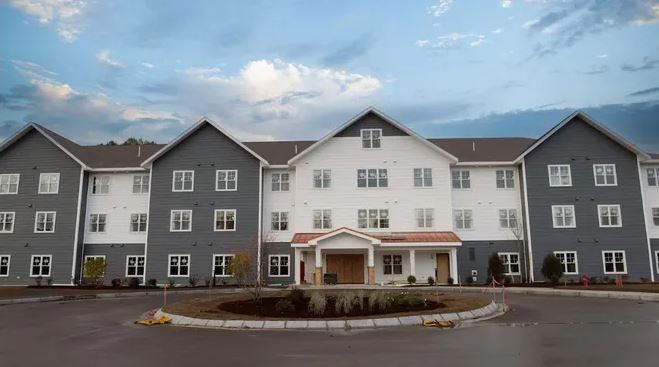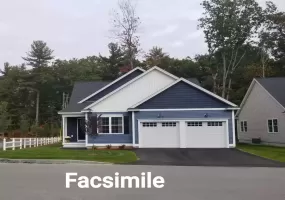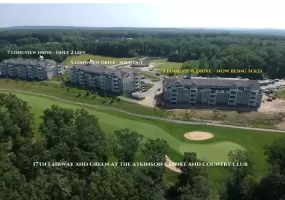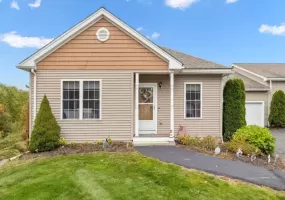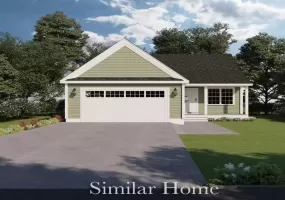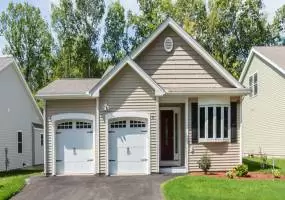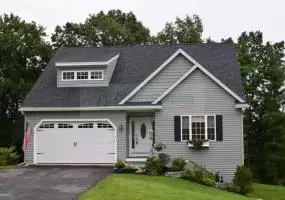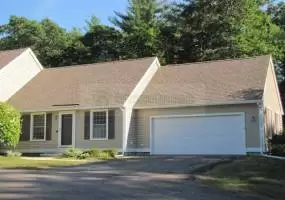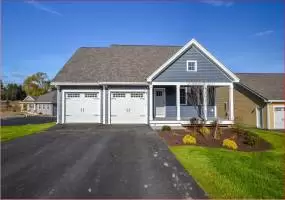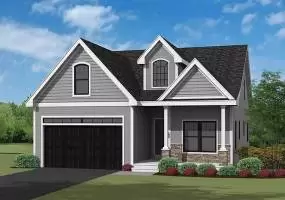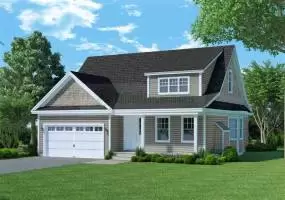NH Retirement Living By Region
Seacoast | Lakes Region | Merrimack Valley | Sunapee | White Mountains
In the pursuit of reimagining senior living, Joe Hogan stands as a beacon of innovation with his ambitious project, Ridgeline Community. With a multifaceted approach designed to cater to the diverse needs and aspirations of seniors, Ridgeline Community promises to redefine the concept of senior living.
Joe Hogan’s Vision for Ridgeline Community
At the helm of Ridgeline Community is Joe Hogan, a visionary entrepreneur with a passion for creating vibrant and inclusive communities for seniors. Hogan’s vision for Ridgeline Community transcends traditional notions of senior housing, aiming to cultivate a dynamic and interconnected environment where residents can thrive and flourish.
Diversity of Housing Options Catering to Various Needs and Ages
Central to Ridgeline Community’s ethos is the belief in providing a spectrum of housing options tailored to accommodate the varied needs and preferences of seniors. From cottages for independent living to assisted-living and memory-care facilities, Ridgeline Community offers a comprehensive range of housing solutions designed to support residents at every stage of their journey.
Integration of Medical Facilities, Commercial Spaces, and Amenities
Ridgeline Community goes beyond just housing. It’s got everything you need right on site! With medical facilities, shops, and fun things to do, Ridgeline Community makes life easy and enjoyable for its residents. From doctor visits to shopping and leisure activities, Ridgeline Community makes sure residents have everything they need to live happy and fulfilling lives.
By offering a mix of services and a commitment to excellence, Ridgeline Community sets a new standard for senior living. With its focus on diversity, convenience, and innovation, Ridgeline Community shows us what’s possible in senior housing, promising a future where every senior can enjoy life to the fullest.
Addressing the Growing Demand for Senior Housing in New Hampshire
In the beautiful state of New Hampshire, more and more seniors are looking for places to live. People like Kathy Bennett, who knows a lot about tourism and healthcare, are noticing this trend. She sees that in places like Carroll County, where the average age is around 52, there’s a growing need for housing that’s just right for older adults.
This change in population is a big deal. As more people get older, there needs to be more options for where they can live. Some might want their own place, while others might need a bit of extra help. It’s important to have all these options available.
Offering different kinds of housing is really important for older adults. By giving them choices, New Hampshire can make sure everyone finds a place that’s perfect for them.
So, it’s clear that meeting the demand for senior housing needs a lot of different ideas. From new rules to building cool new places, everyone needs to work together to make sure older adults have great places to live. And as New Hampshire keeps growing, it’s important to remember that good housing for seniors should always be a priority, making sure everyone can enjoy the beauty and peace of this wonderful state.
Legacy at Laconia and Future Intergenerational Communities: Bridging Generations for Vibrant Living
As the landscape of senior housing continues to evolve, initiatives like Legacy at Laconia are leading the way in redefining the concept of community living. With a focus on intergenerational connectivity and holistic well-being, Legacy at Laconia offers a glimpse into the future of inclusive and vibrant communities.
Overview of Legacy at Laconia’s Mixed-Use Community Project
Legacy at Laconia stands as a testament to innovation in senior housing, boasting a dynamic mixed-use community project that brings together people of all ages under one roof. With a diverse array of housing options, recreational amenities, and commercial spaces, Legacy at Laconia creates a thriving ecosystem where residents can live, work, and play in harmony.
Comparison with Ridgeline Community and Other Similar Initiatives
In comparison to Ridgeline Community and other similar initiatives, Legacy at Laconia distinguishes itself through its emphasis on intergenerational connectivity. While Ridgeline Community caters primarily to seniors, Legacy at Laconia fosters an inclusive environment that welcomes individuals of all ages, fostering meaningful connections and enriching experiences for residents.
Anticipated Benefits and Challenges of Intergenerational Housing
As Legacy at Laconia and similar intergenerational communities continue to gain momentum, there are both anticipated benefits and challenges to consider. On one hand, intergenerational housing offers opportunities for social interaction, mentorship, and mutual support across age groups. On the other hand, navigating diverse needs and preferences within a multigenerational community can present logistical challenges that require thoughtful planning and collaboration.
Ultimately, Legacy at Laconia represents a bold step forward in the pursuit of vibrant and inclusive living environments. By bridging generations and fostering connections between residents of all ages, Legacy at Laconia exemplifies the potential of intergenerational housing to enrich lives, strengthen communities, and shape the future of senior living.
Joe Hogan’s Journey: From Long-Term Care Facilities to Senior Housing Development
Joe Hogan’s career trajectory is a testament to the transformative power of vision and dedication in the realm of senior housing development. With a background deeply rooted in long-term care facility management, Hogan’s journey reflects a remarkable evolution towards pioneering innovative solutions for aging populations.
Hogan’s Background in Long-Term Care Facility Management
Hogan’s journey into the realm of senior housing development began with a pivotal role in long-term care facility management. With an internship at the Veterans Administration in 1982, Hogan embarked on a career focused on healthcare administration. His subsequent endeavors at Clover Health Care in Maine laid the foundation for his expertise in creating thriving communities for older adults.
Evolution of Hogan’s Career Towards Senior Housing Development
As Hogan’s career progressed, so too did his passion for reimagining the senior living experience. From overseeing expansions at Clover Health Care to founding Continuum Health Care, Hogan’s journey was marked by a commitment to addressing the evolving needs of aging populations. With developments in Maine such as Sentry Hill retirement community, Hogan demonstrated a keen understanding of the intersection between healthcare, housing, and community building.
Insights into the Motivations Behind Ridgeline Community
The inception of Ridgeline Community represents the culmination of Hogan’s lifelong dedication to serving older adults with dignity and compassion. Motivated by a desire to create holistic living environments that empower seniors to lead fulfilling lives, Hogan embarked on the ambitious venture of Ridgeline Community. With a multifaceted approach that integrates diverse housing options, medical facilities, and amenities, Ridgeline Community embodies Hogan’s vision of redefining senior living for the 21st century.
In conclusion, Joe Hogan’s journey from long-term care facilities to senior housing development is a testament to the power of vision, passion, and perseverance in shaping the future of aging. As Ridgeline Community and similar initiatives continue to thrive, Hogan’s legacy stands as a beacon of inspiration for creating vibrant and inclusive communities where seniors can truly flourish.
Overcoming Zoning and Development Challenges
Navigating the complex landscape of zoning regulations and development challenges is a crucial aspect of bringing innovative senior housing projects to fruition. In the case of Ridgeline Community and similar initiatives, overcoming these hurdles requires a delicate balance between community needs, economic viability, and regulatory compliance.
Zoning Considerations for Mixed-Use and Senior Housing Developments
Zoning rules are super important for deciding what can be built where. This is especially for places with a mix of homes and stores. These rules set limits on things like how many buildings can be in one area and what types of buildings can be there. Understanding and following these rules is key to making sure new projects follow the law and fit in with the neighborhood.
Noah Hodgetts’ Insights on Balancing Community Needs and Economic Viability
Noah Hodgetts, who works at the state Department of Business and Economic Affairs, talks about how to balance what communities need with what makes sense financially for housing projects. When you mix different kinds of buildings together, like houses and stores, you have to make sure they fit well together and still make money. Hodgetts says it’s really important to make sure new projects are what people want and make sense financially so they can last a long time and help the community.
Hogan’s Experience Navigating Zoning Regulations for Ridgeline Community
Joe Hogan, who has worked in managing long-term care facilities and building senior housing, shares his own experience dealing with zoning rules for Ridgeline Community. From working with local authorities to starting his own company, Hogan knows all about dealing with zoning rules. By working with the government, talking to the people involved, and following the rules, Hogan made sure Ridgeline Community could happen.
Dealing with zoning and building rules is a big job that needs teamwork, know-how, and planning. As people like Joe Hogan and Noah Hodgetts keep working on new ways to build places for seniors, their stories teach us a lot about making sure projects follow the rules and become great places for seniors to live.
Implementation and Phases of Ridgeline Community
As Ridgeline Community takes shape, the implementation strategy encompasses a phased approach to development and construction, ensuring meticulous planning and execution at every stage. With a focus on offering diverse housing options, promoting affordability, and fostering social engagement, Ridgeline Community is poised to redefine the senior living experience in North Conway and beyond.
Phased Approach to Development and Construction
Ridgeline Community’s development unfolds in carefully orchestrated phases, each designed to maximize efficiency and effectiveness. From initial site preparation to the construction of housing units and amenities, the phased approach allows for comprehensive planning and seamless execution. By breaking down the project into manageable stages, developers can address logistical challenges, allocate resources efficiently, and maintain momentum throughout the development process.
Housing Options, Affordability, and Target Demographics
Central to Ridgeline Community’s vision is the provision of diverse housing options that cater to individuals across the socioeconomic spectrum. From cottages for independent living to assisted-living and memory-care facilities, Ridgeline Community offers a range of housing choices tailored to meet the needs and preferences of residents. Moreover, a commitment to affordability ensures that seniors from all walks of life can access high-quality housing options that align with their financial circumstances.
Planned Amenities and Community Features Promoting Social Engagement
At the heart of Ridgeline Community lies a rich tapestry of amenities and community features designed to promote social engagement. From communal gathering spaces to recreational facilities, Ridgeline Community offers residents ample opportunities to socialize. People participate in activities, and forge meaningful connections with their peers. Whether enjoying a game of pickleball, attending a community event, or simply relaxing in the landscaped gardens. The residents of Ridgeline Community can experience a vibrant and fulfilling lifestyle that celebrates community and camaraderie.
In summary, the implementation and phases of Ridgeline Community reflect a holistic approach to senior living development, rooted in thoughtful planning, inclusivity, and a commitment to enhancing the quality of life for residents. As construction progresses and amenities take shape, Ridgeline Community stands poised to become a beacon of innovation and excellence in senior living, setting a new standard for communities where seniors can thrive, connect, and flourish.
Promoting Well-being and Social Connection in Senior Housing
In the quest to redefine senior housing, a critical focus emerges: promoting well-being and social connection among residents. As Dr. Vivek H. Murthy, the U.S. Surgeon General, voices concerns about social isolation among seniors, stakeholders like Joe Hogan are at the forefront of implementing strategies to foster social cohesion and enhance the overall quality of life in senior housing communities.
Dr. Vivek H. Murthy’s Concerns About Social Isolation Among Seniors
Dr. Vivek H. Murthy’s advisory underscores the critical issue of social isolation among seniors, labeling it as an epidemic with widespread ramifications for individuals and communities alike. As seniors contend with feelings of loneliness and detachment, the need for environments prioritizing social connections becomes increasingly apparent. By directly addressing these concerns, senior housing developers can significantly alleviate the negative impacts of social isolation and promote overall well-being among residents.
Importance of Housing Design in Fostering Social Cohesion and Well-being
At the heart of promoting well-being and social cohesion in senior housing lies the significance of housing design. Intentionally crafted spaces that encourage interaction, ensure accessibility, and foster a sense of community are vital for nurturing social bonds and enhancing residents’ quality of life. From communal gathering spots to easily accessible pathways, every aspect of housing design contributes to shaping social dynamics and residents’ overall well-being.
Hogan’s Strategies for Creating Inclusive and Socially Vibrant Communities
Leveraging his extensive experience in senior housing development, Joe Hogan implements a variety of strategies to cultivate inclusive and socially vibrant communities. By emphasizing the incorporation of communal areas, organizing social events, and fostering a culture of mutual support and camaraderie, Hogan ensures that Ridgeline Community and similar initiatives become thriving centers of social engagement and connection. Through these endeavors, Hogan demonstrates the transformative potential of senior housing developments in fostering well-being and social connectivity among residents.
Promoting well-being and social connection in senior housing isn’t just a goal—it’s imperative. By heeding the insights of thought leaders like Dr. Vivek H. Murthy, embracing innovative housing design principles, and implementing strategies for fostering social cohesion, senior housing developers can create environments where residents can truly thrive, connect, and lead fulfilling lives.
Toward a Holistic Approach to Innovative Senior Housing in NH
As senior housing continues to evolve, there’s a growing recognition for innovative solutions prioritizing overall well-being and social connection. From tackling social isolation to nurturing inclusive communities, stakeholders are joining forces to reshape senior housing in New Hampshire and beyond.
Recap of the Need for Innovative Senior Housing Solutions
The demand for innovative senior housing arises from various factors like demographic changes, evolving lifestyles, and emerging health trends. Traditional housing models no longer meet the needs of a growing and diverse senior population. Embracing innovation allows stakeholders to adapt to these changes, ensuring housing options enhance seniors’ quality of life and support their independence.
Importance of Collaboration and Community Engagement in Housing Development
Collaboration and community involvement are essential for successful senior housing development. By partnering with developers, local authorities, healthcare providers, and community groups, stakeholders can pool resources and expertise to create housing solutions tailored to residents’ needs. Community engagement ensures developments align with local values, fostering a sense of belonging among residents.
Vision for the Future of Senior Housing in New Hampshire
Looking ahead, the future of senior housing in New Hampshire promises innovation, inclusivity, and vibrant communities. A holistic approach prioritizing well-being, accessibility, and social connections will enable seniors to age with dignity and purpose. Whether through advanced technologies, intergenerational living spaces, or community hubs, the vision for senior housing in New Hampshire emphasizes resilience, adaptability, and compassion.
In conclusion, achieving comprehensive senior housing requires collective effort, vision, and dedication. By embracing innovation and prioritizing residents’ well-being, stakeholders can create environments that cater to the diverse needs of older adults, enriching lives and strengthening communities.
